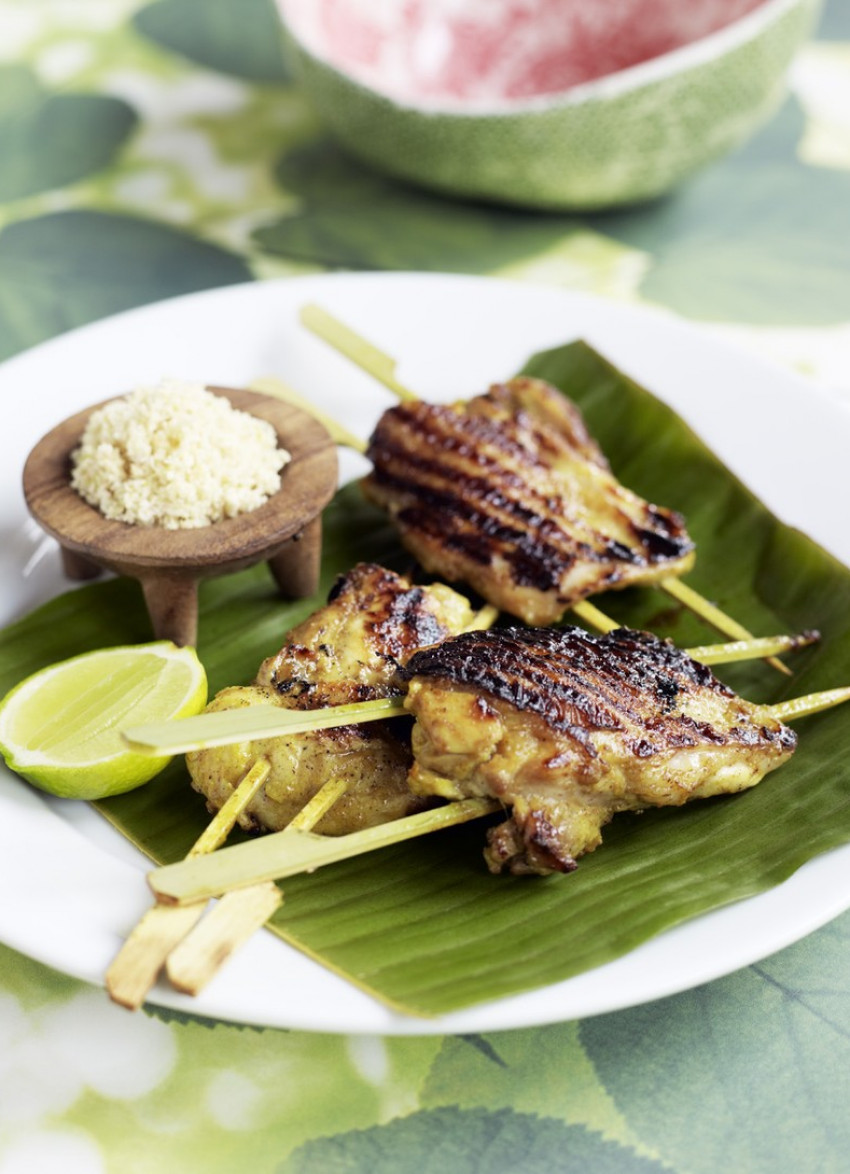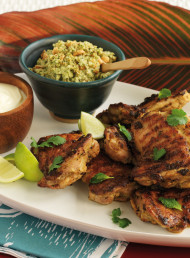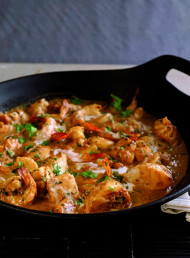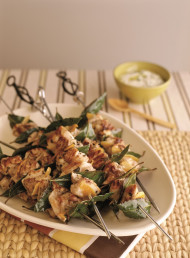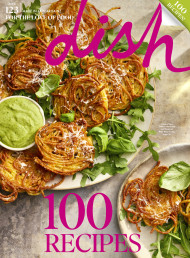Chicken Kebabs with Coconut and Lime Sambal
Photography by Aaron McLean.
A sambal is a multi-purpose condiment with many variations that is designed to add flavour and spice to simple or plain foods such as rice or noodles.
Serves: 4-6
INGREDIENTS
6 boneless chicken thighs, skin on
Marinade
3 tablespoons vegetable oil
1 onion, finely chopped
2 cloves garlic, crushed
1 teaspoon each ground turmeric and garam masala
2 teaspoons mild curry powder
2 tablespoons water
1/3 cup apricot or peach jam
3 tablespoons tamarind concentrate
¾ cup chicken stock
1 teaspoon sea salt
Coconut sambal
2/3 cup desiccated coconut
finely grated zest and juice of 2 limes
¼ – 1 teaspoon chilli powder
1 shallot, very finely chopped
½ teaspoon sea salt
To cook
¼ cup plain yoghurt
24 wooden skewers, soaked in water for 30 minutes
METHOD
Marinade: Heat the oil in a small saucepan with the onion, garlic, turmeric, garam masala, curry powder and water. Cover and cook until the onion is soft. Add a little extra water if the spices start to stick. Add the jam, tamarind, stock and the salt and stir to dissolve the jam. Cook at a gentle boil for 20-25 minutes, stirring often, until thick and reduced. Cool. Transfer to a food processor, add the yoghurt and pulse to a rough paste.
Chicken: Cut each chicken thigh into two pieces. Place in a large bowl with the marinade and turn to coat well. Cover and marinate for up to 24 hours in the refrigerator.
Sambal: Place all the ingredients in a food processor and pulse to blend.
To cook: Remove the chicken pieces from the marinade. Thread two skewers through each piece so it will lie flat when cooking. Preheat a grill plate or sauté pan and cook the chicken over a medium-low heat for 25-30 minutes or until fully cooked through. Don’t have the heat too high or the marinade will burn before the chicken is cooked through.
To serve: Place the kebabs on a serving platter and serve with the coconut sambal.
Pantry note
Tamarind concentrate: derived by soaking dried tamarind pods in water then passing through a sieve to obtain a pulp. You can make it yourself easily or purchase the concentrate ready-made in a jar. The flavour is sour-sweet and is used in Asian and Middle Eastern dishes in the same way lemon juice is used in Western cooking. Both pods and concentrate are readily available from Asian grocery stores and good supermarkets.
latest issue:
Issue #123
Depending on where you live, spring can bring anything from warmer temperatures and rainy days, to hail, sleet and snow! Dish has you covered for all weather in our latest issue with everything from new season’s fresh asparagus to comforting fried chicken, three ways. With pizzas, dinners for two, recipes for entertaining, indulgent desserts, easy ‘make it tonight’ dishes, an extract from Olivia Galletly’s latest cookbook, fritters, and even a Mexican feast, this issue is jam-packed. With 100 recipes, this bumper issue is one not to be missed!

